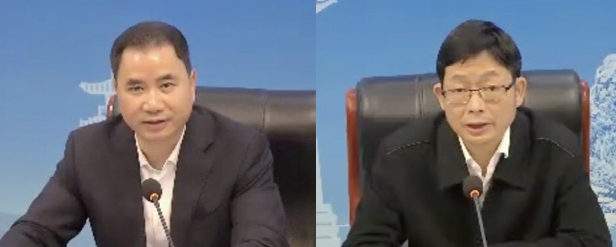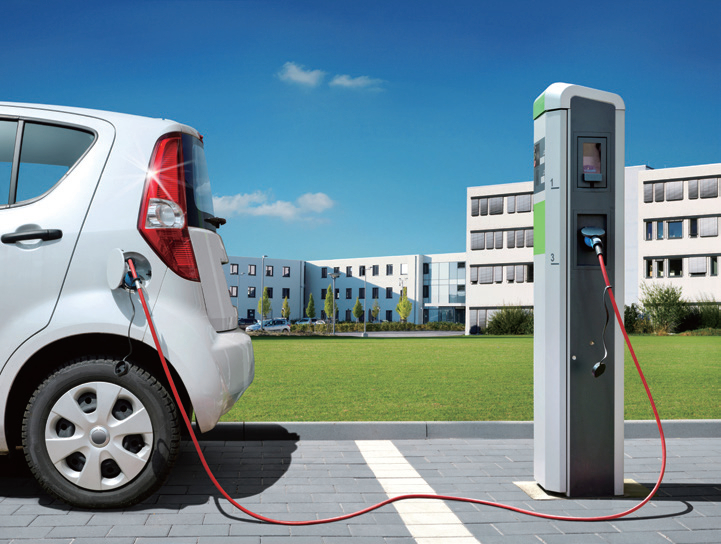Although Zhaoqing as a Guangdong-Hong Kong-Macao Greater Bay Area (Greater Bay Area) city may not be catching as much attention as Shenzhen, Guangzhou and other traditional economic centers, it has more to offer than famous attractions such as Seven Star Crags and Dinghushan. Strategically connecting the Greater Bay Area with the south- west of China, the city has attracted the anchorage of a good number of high-profile companies. Its potentials are not to be undermined.
Converging wealth and prosperity
 According to Qiu Jianqiang , Party Secretary and Director of Zhaoqing Investment Promotion Agency, Zhaoqing is connected with Guangzhou and Foshan on its east, and the south-west region of China on its west. It is the one and only city in the Greater Bay Area that borders with south-west China. Three major economic belts, namely the Pearl River-Xijiang River Economic Belt, the Guangdong-Guangxi-Guizhou high-speed rail economic belt, the in industrial belt for advanced equipment manufacturing on the west bank of the Pearl River also converge here. Geographically, Zhaoqing is the Greater Bay Area’s radiating gateway that connects with China’s south-west region. The superb location means Zhaoqing is highly accessible and is set to prosper. In fact, the beauty of the city has been commended by President Xi Jinping on multiple occasions.
According to Qiu Jianqiang , Party Secretary and Director of Zhaoqing Investment Promotion Agency, Zhaoqing is connected with Guangzhou and Foshan on its east, and the south-west region of China on its west. It is the one and only city in the Greater Bay Area that borders with south-west China. Three major economic belts, namely the Pearl River-Xijiang River Economic Belt, the Guangdong-Guangxi-Guizhou high-speed rail economic belt, the in industrial belt for advanced equipment manufacturing on the west bank of the Pearl River also converge here. Geographically, Zhaoqing is the Greater Bay Area’s radiating gateway that connects with China’s south-west region. The superb location means Zhaoqing is highly accessible and is set to prosper. In fact, the beauty of the city has been commended by President Xi Jinping on multiple occasions.
Connectivity supported by land and water transport
Zhaoqing’s strategic location has guided it to establish itself as “Greater Bay Area along the track”. At present, highspeed rails are connecting Zhaoqing and Guangzhou with a 30-minute ride; it takes one hour to reach Shenzhen, and 1 hour and 20 minutes to reach Hong Kong. Three transport circles are successfully constructed. They include the 30-minute circle of Guangzhou-Foshan- Zhaoqing; the one-hour circle of the Greater Bay Area; and the 1-hour circle of the inner- city area. With some more highspeed rails to complete in future, transportation will become quicker and more convenient. Furthermore, the Guangzhou-Foshan- Zhaoqing expressway, Shantou-Kunming expressway, Shantou-Zhanjiang expressway, etc. will soon commence service. At 695 km, these expressways rank seventh in the province.
Proximity to Xijiang River is yet another advantage for Zhaoqing, which has developed a very comprehensive waterway transport network. Xijiang River is the “golden waterway” that connects Greater Bay Area and China’s south-west region. Throughout the year, it can allow 5,000 TEU container ships to shuttle across rivers and oceans. Twenty-three ports can be found along the shoreline. Zhaoqing is a major inland port in China, as well as a key port in western Pearl River Delta for connecting markets at home and abroad.
A high-potential industrial hub
 Riding on its comprehensive transportation and superior location, Zhaoqing has witnessed rapid development in various industries. In particular, new energy vehicles and auto parts, digital information, green construction materials and metal processing are four leading sectors. The city has also successfully attracted the anchorage of many top-notch companies, including CATL, Putailai, Wada, Shimao, Xpeng Motors, etc.
Riding on its comprehensive transportation and superior location, Zhaoqing has witnessed rapid development in various industries. In particular, new energy vehicles and auto parts, digital information, green construction materials and metal processing are four leading sectors. The city has also successfully attracted the anchorage of many top-notch companies, including CATL, Putailai, Wada, Shimao, Xpeng Motors, etc.
Qiu Jianqiang added that although Zhaoqing represents close to 26% of the gross area of Greater Bay Area, only 6.5% of its land is developed. In future, over 1,700 square kilometers can be developed. There is much growth potential. According to the latest state policies, top talents from Hong Kong and Macao would receive subsidies when they choose to settle in Zhaoqing, and such subsidies can be exempted from individual income tax. Besides, Zhaoqing has also rolled out the a the Xijiang Talent Program and “1+1+N” policies to provide convenience and incentives to talents to live, to work and to conduct research in the city, making it a land that converges talents.
Promising high-tech development zone
Speaking of the most dazzling development in Zhaoqing, it must be Zhaoqing National High-Technology Development Zone, which is situated to the far east of Zhaoqing and opposite Foshan across Beijiang River. It takes about one hour on expressway to reach Foshan or Guangzhou. Over the past 20 years, more than 20 billion yuan Zhaoqing are all demonstrating remarkable was invested to promote the construction of infrastructure and social amenities. The high-tech zone is a key national-grade development area.
Jiang Zequan, Director of the Commission of Zhaoqing High Technology Industry Development Zone and Deputy Secretary of the Party Working Committee reckoned that Zhaoqing is at the bottom amongst the nine Greater Bay Area cities from electricity rates to average housing prices. One could describe the city as the low-lying area in the Greater Bay Area. Value wise, however, Zhaoqing is a highland, because its investment value and growth potentials are the highest. Figures have also indicated that the growth rate of Zhaoqing has outpaced the average levels of Guangdong province in terms of value-added industrial output, general budget revenue and fixed asset investments. The high-tech industry development zone is the growth engine of Zhaoqing.
New energy vehicle hub
 Jiang explained the priority of the high-tech zone over the next five years is to establish itself as a national-grade new energy smart vehicle manufacturing hub. As the home to 24,000 companies and 80 listed companies that are related to new energy vehicles and housing many companies within the product chain of li-ion batteries, Guangdong province is truly a major province for new energy vehicles. Guangzhou, Shenzhen and Zhaoqing are all demonstrating remarkable growth in this area.
Jiang explained the priority of the high-tech zone over the next five years is to establish itself as a national-grade new energy smart vehicle manufacturing hub. As the home to 24,000 companies and 80 listed companies that are related to new energy vehicles and housing many companies within the product chain of li-ion batteries, Guangdong province is truly a major province for new energy vehicles. Guangzhou, Shenzhen and Zhaoqing are all demonstrating remarkable growth in this area.
Zhaoqing’s high tech zone is the manufacturing base of Xpeng Motors (one of the three largest electric vehicle makers in China) and Contemporary Amperex Technology (CATL) (global leader in the research, development and manufacturing of li-ion batteries). “At present, Zhaoqing is surrounded by many renowned auto makers. In addition to Xpeng, there are also BAIC Foton, FAW-Volkswagen, GAC Honda, GAC Aion, GAC Toyota, etc. We forecast that by 2023, the annual output of new energy vehicles from auto makers surrounding the high-tech development zone will reach 2 million vehicles.”
Jiang added that the high-tech development zone had invited China Automotive Engineering Research Institute to help with its planning. The new energy vehicle smart manufacturing city spans about 45 square kilometers. The city is functionally positioned to cover two core companies (Xpeng and CATL), as well as production, vitality, lifestyle and ecology. Jiang envisaged that this is not only a successful industrial zone, but also a leading example of a low carbon emission and IoT city. “Guangdong province and the State are all very optimistic with the automobile manufacturing sector of Zhaoqing. We believe this will be a land of opportunities and a vibrant, prosperous area in Greater Bay Area.”




